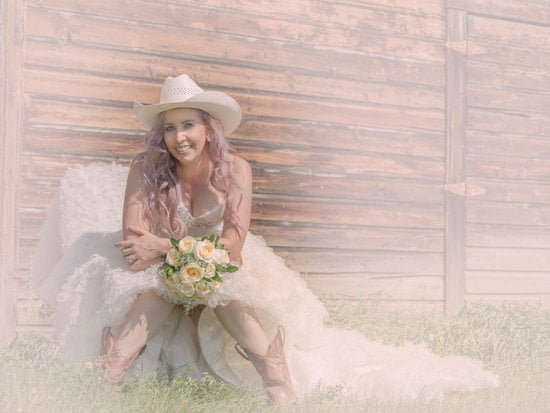The significance of wedding and engagement rings in Western culture is undeniable, symbolizing love, commitment, and the eternal bond between partners. While both types of rings hold great importance in a relationship, there are distinct differences between the two. Understanding these disparities can help couples navigate the process of selecting and exchanging these meaningful symbols.
Engagement rings have a rich historical background dating back centuries, with various traditions and customs associated with their presentation and wearing. These rings are traditionally given as a symbol of a couple’s intention to marry, marking the beginning of the engagement period. The engagement ring typically features a prominent gemstone, such as a diamond, set on a precious metal band.
On the other hand, wedding rings have their own unique history and symbolism. They are exchanged during the marriage ceremony as a symbol of lifelong commitment and unity. Unlike engagement rings, wedding bands are usually simpler in design with emphasis on durability and comfort for everyday wear.
While both types of rings serve as symbols of love and commitment, understanding the differences between them can be instrumental in making informed decisions when selecting these cherished pieces of jewelry for one’s partner or oneself.
History of Engagement Rings
The history of engagement rings dates back to ancient times, with the custom believed to have originated from ancient Egypt. The circular shape of the ring symbolized eternity, while the opening in the center represented a gateway to the future.
Ancient Romans also adopted the tradition of giving engagement rings as a symbol of ownership and fidelity. It wasn’t until the 15th century that diamonds became popular for engagement rings, thanks to Archduke Maximilian of Austria’s proposal to Mary of Burgundy with a diamond ring.
Throughout history, there have been various traditions and customs associated with engagement rings. For example, in some cultures, engagement rings are worn on different fingers depending on whether one is single or engaged.
In ancient Rome, women would be given two bands – one made of gold to wear in public and one made of iron to wear at home which symbolizes ownership. Additionally, the concept of an engagement ring being equivalent to three months’ salary was created by De Beers as part of their marketing strategy in the 20th century.
Engagement rings serve as a symbolic representation of a couple’s commitment and intention to marry. They are meant to signify love, devotion, and fidelity towards one another. The exchange of engagement rings holds significant meaning during this stage in a relationship as it marks the beginning of a lifelong journey together. This tradition has continued through generations and remains an integral part of Western culture today.
| History | Engagement Rings |
|---|---|
| Ancient Egypt | Symbolized eternity & future |
| Ancient Rome | Ownership & fidelity symbol |
| De Beers marketing strategy | The rule that equates engagement ring cost to three months’ salary |
Purpose of Engagement Rings
The purpose of engagement rings goes beyond being a beautiful piece of jewelry. These rings symbolize a couple’s commitment to each other and their intention to marry. Typically, the engagement ring is given as a promise of marriage, and it signifies the start of an exciting new chapter in a couple’s relationship. It serves as a visible symbol of love and devotion, marking the beginning of the journey towards marriage.
One key difference between engagement rings and wedding rings is the timing of when they are exchanged. The giving of an engagement ring often marks the proposal and acceptance of marriage, while wedding rings are exchanged during the actual marriage ceremony. This highlights the significance of the engagement period in preparing for and anticipating marriage.
In addition to symbolizing commitment, engagement rings often serve as an expression of individual style and taste. There are various styles and designs available, allowing couples to choose a ring that reflects their unique personality. The type of gemstone or setting can also hold personal significance for the couple. Ultimately, engagement rings not only represent commitment but also allow individuals to express themselves through this meaningful piece of jewelry.
| Purpose | Differences |
|---|---|
| Symbolizes commitment to marry | Timing: Exchanged during proposal |
| Expresses individual style and taste | Allows for personal expression through design |
Types of Engagement Rings
When it comes to choosing an engagement ring, there are countless styles and designs to consider. Here are some popular types of engagement rings:
1. Solitaire Rings: This classic style features a single diamond or gemstone set on a band, allowing the stone to take center stage.
2. Halo Rings: A halo ring encircles the center diamond with smaller accent stones, creating a dazzling and glamorous look.
3. Vintage Rings: Inspired by different eras, vintage engagement rings often feature intricate details and unique designs that evoke a sense of timeless elegance.
4. Three-Stone Rings: Also known as trilogy rings, these feature three diamonds or gemstones, symbolizing the past, present, and future of a relationship.
5. Gemstone Rings: While diamonds are the traditional choice for engagement rings, many couples are opting for colorful gemstones such as sapphires, emeralds, or rubies for a more personalized touch.
When selecting an engagement ring, it’s important to consider not only the style and design but also the setting and metal preference that best suits the wearer’s personality and lifestyle. Ultimately, the choice of an engagement ring should reflect the individuality and uniqueness of the person wearing it.
History of Wedding Rings
The history of wedding rings is a rich and storied one, dating back thousands of years. The tradition of exchanging rings during a marriage ceremony has been practiced in various cultures around the world, with different customs and meanings attached to the act.
Historical Roots
The concept of wedding bands can be traced back to ancient Egypt, where rings made from materials such as reeds and hemp were exchanged as a symbol of eternity. These early rings were worn on the fourth finger of the left hand, as it was believed that this finger contained the “vena amoris” or the “vein of love” that led directly to the heart. This tradition eventually spread to other civilizations, including the Greeks and Romans.
Evolution of Wedding Bands
Over time, wedding rings have evolved in terms of materials and designs. In medieval Europe, for example, gimmel rings featuring two interlocking bands became popular symbols of betrothal and were later joined together during the wedding ceremony. The use of precious metals such as gold and silver also became more common as craftsmanship advanced.
In modern times, wedding rings come in a myriad of styles, from simple metal bands to elaborate designs adorned with gemstones. The symbolism behind these rings remains constant – they represent the commitment and fidelity between partners in a marriage.
As such, while engagement rings mark the decision to marry at a specific point in time, wedding rings symbolize the ongoing union and commitment between spouses throughout their lives together.
Purpose of Wedding Rings
The purpose of wedding rings goes beyond being a mere piece of jewelry; it serves as a symbol of the commitment and love between two individuals. The exchanging of wedding rings during the marriage ceremony represents the union and lifelong dedication that the couple promises to each other. This tradition dates back centuries and is deeply rooted in many cultures around the world.
There are several symbolic meanings associated with the wedding ring exchange. One significant symbolism is the unending circle of the ring, which represents eternity and infinity, signifying never-ending love and commitment. Additionally, the ring is placed on the fourth finger of the left hand, known as the “ring finger,” as it was believed to have a direct vein connected to the heart. This placement further emphasizes the deep emotional connection and bond between spouses.
When selecting a wedding ring, couples often put thought into choosing a design that reflects their personal style and taste. Whether it be a simple gold band or one adorned with diamonds or gemstones, each couple has their own unique preference when it comes to their wedding rings. Some may opt for matching bands, while others prefer individualized designs that hold personal significance to each person.
Differences Between Engagement and Wedding Rings
Engagement rings and wedding rings are both symbols of love and commitment, but they have distinct differences in terms of timing, purpose, and symbolism. The most obvious difference between the two is their timing in the progression of a relationship. An engagement ring is typically given at the time of a marriage proposal, signifying the intention to marry, while a wedding ring is exchanged during the actual marriage ceremony, symbolizing the couple’s commitment to each other.
In addition to their timing, engagement rings and wedding rings also differ in their styles and designs. Engagement rings often feature a prominent center gemstone, such as a diamond or colored gemstone, and are typically more ornate and elaborate in design. Wedding rings, on the other hand, are usually simpler in design and may be made of plain metal bands without any additional adornments.
Furthermore, the symbolic meaning behind engagement rings and wedding rings also sets them apart. An engagement ring represents a promise and anticipation of a future together, while a wedding ring signifies the lifelong commitment that is established through marriage. This contrast in symbolism reflects the different stages of love and commitment within a relationship.
When selecting an engagement or wedding ring, it is important to consider not only personal preferences but also the meaning behind each type of ring. Whether choosing an engagement ring to signify the beginning of a lifelong journey together or selecting wedding bands to symbolize eternal love and commitment, understanding the differences between these two types of rings can help couples make meaningful choices that reflect their unique love story.
Cultural Variations
Perceptions of Rings in Different Cultures
The exchange of engagement and wedding rings is a tradition deeply rooted in Western culture, but the significance of these rings varies across different societies. In some cultures, such as those in parts of Asia and the Middle East, the emphasis may be more on other types of jewelry or symbolic objects to mark important milestones in relationships.
Understanding how other cultures perceive and exchange engagement and wedding rings can provide valuable insights into the diverse meanings and customs associated with these symbols of commitment.
Unique Customs Related to Rings
In many cultures, the way engagement and wedding rings are exchanged or worn can carry particular cultural significance. For example, in some countries, such as Spain and Chile, it is customary for both partners to wear wedding rings on their right hand before the wedding and then switch them to their left hand during the ceremony.
Additionally, some cultures have specific traditions related to the design and materials of engagement and wedding rings, reflecting their unique values and beliefs surrounding marriage and commitment.
Adaptation of Western Traditions
As globalization continues to shape our world, Western customs surrounding engagement and wedding rings are being adopted by people from diverse backgrounds. This trend has led to a blending of traditions where individuals may choose to combine elements from their own cultural heritage with those from Western practices when it comes to exchanging rings in romantic relationships. Understanding these adaptations and hybridizations can provide valuable insights into the evolving symbolism of engagement and wedding rings worldwide.
Personal Preferences
When it comes to choosing an engagement or wedding ring, personal preferences play a significant role in the decision-making process. One of the main differences between the two types of rings is that the engagement ring is typically chosen by the person proposing, while the wedding ring may be selected by both partners together.
The engagement ring is often a surprise for the recipient and reflects the proposer’s understanding of their partner’s tastes and preferences. On the other hand, the wedding ring is a joint decision that symbolizes the couple’s commitment to each other.
When it comes to personal preferences for engagement rings, there are several factors to consider. These may include the style of the ring, such as whether it is a solitaire, halo, or vintage design, as well as the type of setting and choice of gemstone. Some individuals may prefer a traditional diamond engagement ring, while others may opt for alternative gemstones such as sapphires or emeralds for a more unique and personalized touch.
Additionally, considerations such as metal preference (e.g. gold, platinum) and overall design aesthetic are all important aspects to take into account when choosing an engagement ring.
Similarly, when selecting wedding rings based on personal preferences, couples may take into consideration factors such as matching or complementary designs that reflect their individual styles while also symbolizing their unity as a married couple. Whether they prefer simple and classic bands or intricate and embellished styles, personal taste plays a crucial role in choosing wedding rings that resonate with both partners’ personalities and relationship dynamics.
Overall, personal preferences are an integral part of choosing both engagement and wedding rings. Each individual brings their own unique taste and style to this decision-making process, contributing to the symbolism and significance of these meaningful pieces of jewelry in their relationship.
Conclusion
In conclusion, the difference between a wedding ring and an engagement ring lies in their timing and purpose. Engagement rings symbolize the commitment to marry and are traditionally given at the time of proposal, while wedding rings represent the lifelong bond formed in marriage and are exchanged during the wedding ceremony. Additionally, engagement rings often feature more elaborate designs and gemstones, while wedding bands tend to be simpler in style.
Both types of rings hold immense significance in Western culture, signifying love, commitment, and partnership. Despite any cultural variations or unique customs related to these rings, their universal symbolism remains constant. Whether it’s the anticipation of an impending marriage or the celebration of a union that has already taken place, both wedding and engagement rings serve as tangible reminders of enduring love and commitment.
When choosing either type of ring, personal preferences play a crucial role. Factors such as individual styles, tastes, and cultural traditions should be taken into consideration when selecting the perfect ring. Ultimately, whether it’s an engagement or a wedding ring, what truly matters is the love and commitment it represents in a relationship.
Frequently Asked Questions
Is It Okay to Use Engagement Ring as Wedding Ring?
It is perfectly okay to use an engagement ring as a wedding ring. Many people choose to do so for sentimental reasons or simply because they love the ring and want to continue wearing it after getting married.
Is an Engagement Ring the Same as a Wedding Ring?
An engagement ring and a wedding ring are not the same. An engagement ring is typically given at the time of the proposal, while a wedding ring is exchanged during the marriage ceremony. However, some people choose to wear both rings together after getting married.
What Happens to Engagement Ring After Wedding?
After the wedding, some people choose to continue wearing their engagement ring alongside their wedding ring on the same finger. Others may decide to wear only their wedding ring and keep the engagement ring safe as a meaningful keepsake for sentimental value or possibly pass it down to future generations.

I have been involved in marriages for over 20 years helping couples and singles understand more about them.





